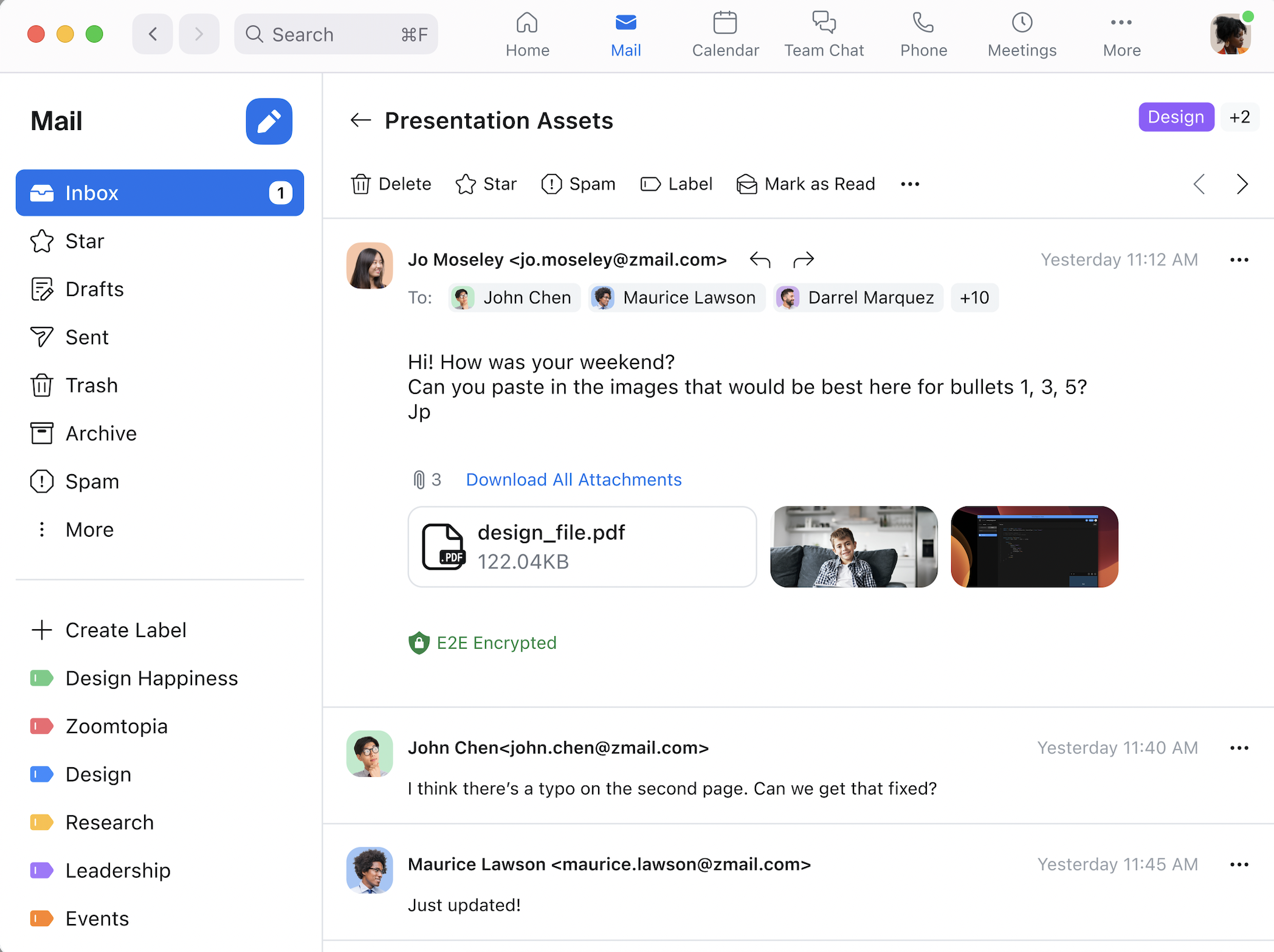At the height of the pandemic Zoom was the go-to application for meetings with people stuck at home in lock down. During FY 2021, the company was growing at an unsustainable triple-digit rate, peaking at a mind-blowing 369% growth in Q3 2021. By Q2 2023, its most recent quarter, it was down to single digit 8% growth (but with $5.5 billion in cash on hand).
That’s quite a swing, and the company recognizes that it can’t rely completely on online meeting software. That’s why it has been looking to branch out beyond the core meeting service over the last couple of years by moving into areas like contact center, sales intelligence and phone, while expanding the meeting platform into areas like white boarding
To push that idea even further, the company announced the beta of email and calendar software at its Zoomtopia customer conference today. Company founder and CEO Eric Yuan recognizes that there are people who spend a lot of their time on Zoom and he wants to provide all the tools to do that without task switching.
“We are going to announce the beta of a Zoom email and calendar clients. Essentially, any user can download a new client to use our email and calendar,” Yuan told TechCrunch.
But on the back end, they can simply connect to a GMail or Microsoft Outlook account or server if they wish. “On the server side it could still be a Google or Microsoft integration for existing Google and Microsoft customers,” he explained.
He expects that many customers who embrace the Zoom email and calendar apps, who are long time Google and Microsoft email and calendar customers will choose to use the clients with the back-end integration, but small business owners, who might not have formal IT teams may choose to let Zoom manage both the client and server side.
That’s why the company is also announcing a hosted email and calendar. Among the features it will have is the ability to create a unique customer domain and end-to-end encryption.

Zoom Mail interface Image Credits: Zoom
He pointed out that the Zoom hosted service is not like consumer email like Gmail. It will be more like a private platform with a small group of people sharing email. That should help cut down significantly on junk and unwanted emails because only a limited number of people will have access to the platform. Whether the company can prevent junk completely remains to be seen, but the goal is to have an email and calendar application tightly integrated with the Zoom platform with limited access to outside parties.
For people connecting to GMail or Microsoft Outlook, the service will be free for both paid and free tier Zoom customers. For those who want Zoom to run everything, it will be available as part of the Zoom One Pro or higher subscription plans, but at no additional cost.
Other announcements
While the email and calendar stand out, they aren’t the only announcements the company is making this week. The company is also announcing Zoom Spots, which is a watercooler kind of experience where people can drop in for a few minutes, have a spontaneous conversation and leave. It’s not unlike Slack Huddles, which Slack introduced last year for a similar kind of quick chat.
“We are introducing a new service called Zoom Spots, which is essentially a persistent video where you can look around, see who’s there and you can join these conversations and you don’t have to schedule meetings. And it’s a pretty interesting concept to support hybrid work,” he said.
The company is also introducing a couple of other tools outside the pure meeting sphere including a customer service chat bot for its contact center service, which is probably related to its acquisition of Solvvy in May. It is also introducing a new sales intelligence tool, which acts a virtual coach for sales teams, simulating various sales situations. The latter is part of the Zoom IQ for Sales toolkit announced earlier this year.
The company is clearly working hard to move beyond its online meeting roots, and to find ways to keep people on the platform as it expands further into adjacent areas of the core meeting business.
Zoom’s adding email and calendar as it pushes harder to expand the platform by Ron Miller originally published on TechCrunch

